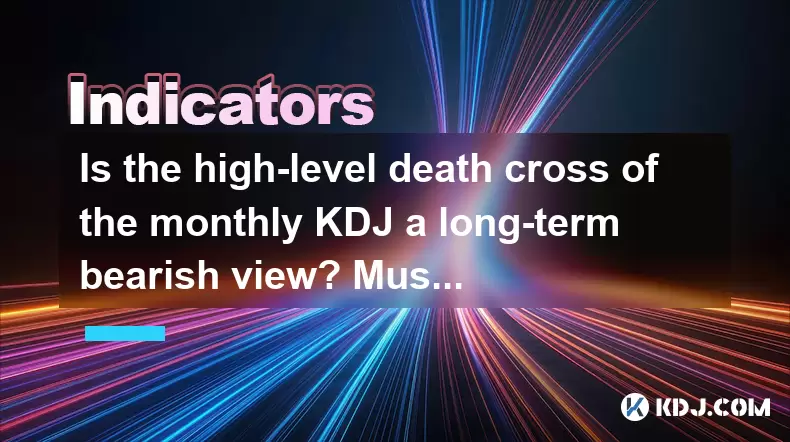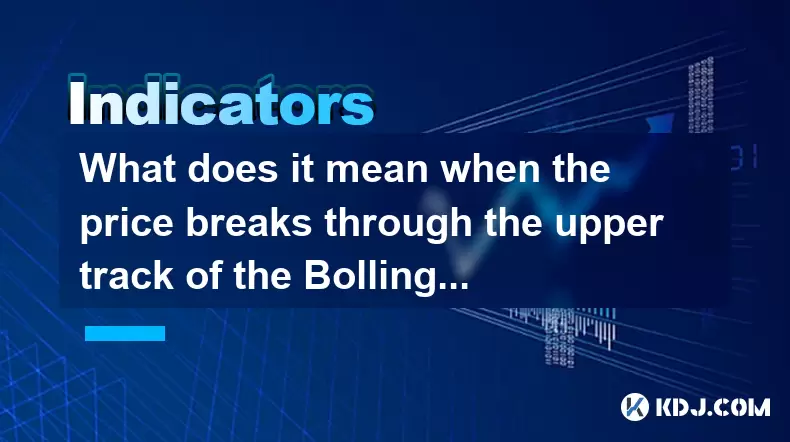-
 Bitcoin
Bitcoin $117500
-0.66% -
 Ethereum
Ethereum $3760
-1.24% -
 XRP
XRP $3.087
-2.54% -
 Tether USDt
Tether USDt $0.9999
-0.01% -
 BNB
BNB $803.6
-4.03% -
 Solana
Solana $180.3
-4.15% -
 USDC
USDC $0.9998
-0.01% -
 Dogecoin
Dogecoin $0.2218
-4.92% -
 TRON
TRON $0.3366
3.71% -
 Cardano
Cardano $0.7785
-3.73% -
 Hyperliquid
Hyperliquid $42.90
-4.75% -
 Sui
Sui $3.797
-7.45% -
 Stellar
Stellar $0.4165
-2.32% -
 Chainlink
Chainlink $17.65
-4.17% -
 Bitcoin Cash
Bitcoin Cash $561.0
-3.86% -
 Hedera
Hedera $0.2611
-4.54% -
 Avalanche
Avalanche $24.33
-7.02% -
 UNUS SED LEO
UNUS SED LEO $8.972
0.06% -
 Litecoin
Litecoin $107.6
-2.79% -
 Toncoin
Toncoin $3.254
-1.84% -
 Shiba Inu
Shiba Inu $0.00001306
-4.69% -
 Ethena USDe
Ethena USDe $1.001
0.00% -
 Uniswap
Uniswap $10.10
-4.83% -
 Polkadot
Polkadot $3.902
-4.63% -
 Monero
Monero $315.1
-2.57% -
 Dai
Dai $1.000
0.02% -
 Bitget Token
Bitget Token $4.499
-2.53% -
 Pepe
Pepe $0.00001145
-7.38% -
 Cronos
Cronos $0.1479
6.07% -
 Aave
Aave $281.3
-4.07%
Is the high-level death cross of the monthly KDJ a long-term bearish view? Must I leave the market?
A monthly KDJ death cross suggests weakening bullish momentum and potential bearish trends, but it doesn't guarantee a sustained downtrend in crypto markets.
Jun 19, 2025 at 01:50 am

Understanding the Monthly KDJ Indicator
The KDJ indicator, also known as the stochastic oscillator, is a momentum-based technical analysis tool used to identify overbought and oversold conditions in financial markets. It consists of three lines: K-line (fast stochastic), D-line (slow stochastic), and J-line (divergence). When applied to monthly charts, the KDJ can offer long-term insights into market sentiment.
In cryptocurrency trading, especially for assets like Bitcoin or Ethereum, monthly indicators are considered significant because they reflect broader market trends. A high-level death cross occurs when the K-line crosses below the D-line at an overbought level, typically above 80. This signal is often interpreted as a bearish reversal.
However, it's crucial to understand that while this pattern may indicate weakening momentum, it does not guarantee an immediate or sustained downtrend. Historical data shows that even after a death cross on the monthly chart, price movements can remain volatile and unpredictable.
What Does a Death Cross on Monthly KDJ Mean?
A death cross on the monthly KDJ suggests that the bullish momentum that previously drove the price upward is losing strength. In traditional markets, this could be a precursor to a bear market. However, in the crypto space, where volatility is inherent, such signals should be treated with caution.
- Overbought levels don't always lead to immediate corrections.
- Market psychology and macroeconomic factors play a critical role in shaping outcomes.
- Volume and on-chain activity should also be analyzed alongside technical indicators.
It’s important to note that the KDJ is more effective when combined with other tools such as moving averages, RSI, or volume analysis. Relying solely on a single indicator can lead to misinterpretations, especially in highly speculative environments like cryptocurrency.
Historical Precedents in Crypto Markets
Looking back at previous cycles, there have been instances where a monthly KDJ death cross occurred before significant corrections. For example:
- In early 2018, following a strong bull run, the KDJ formed a death cross on Bitcoin’s monthly chart, which was followed by a multi-month bear market.
- Similarly, in mid-2022, during the crypto crash, a death cross appeared on several altcoins' monthly charts before prices plummeted.
However, there are also cases where the death cross did not result in a prolonged downturn. In 2020, shortly after the March crash, the KDJ briefly crossed in a death pattern but was quickly followed by a powerful rally driven by macroeconomic stimulus and institutional adoption.
These examples illustrate that while the death cross can act as a warning sign, it doesn’t always mean long-term bearishness without additional confirmation from other indicators and market conditions.
Should You Leave the Market Immediately?
Deciding whether to exit the market based on a monthly KDJ death cross depends on multiple factors, including your investment strategy, risk tolerance, and overall portfolio allocation.
- Long-term investors might view this as a potential consolidation phase rather than an outright bearish signal. They may hold their positions unless other fundamental or macro indicators deteriorate.
- Short-term traders may use this as an opportunity to hedge or reduce exposure temporarily until clearer directional signals emerge.
- Risk-averse investors may interpret this as a reason to rebalance their portfolios or shift towards stablecoins or less volatile assets.
It’s essential to avoid making impulsive decisions based solely on one technical indicator. The cryptocurrency market is influenced by numerous external forces such as regulatory news, macroeconomic policies, and global events. These factors must be weighed carefully before taking any action.
How to Approach Trading or Investing After a Monthly KDJ Death Cross?
If you're considering how to navigate the market after observing a monthly KDJ death cross, here are some actionable steps:
- Monitor Weekly and Daily Charts: Look for signs of weakness or strength in shorter timeframes. If weekly KDJ also forms a death cross, it reinforces the bearish outlook.
- Watch Volume Trends: A decline in trading volume during rallies can confirm weakening demand.
- Track On-Chain Metrics: Tools like Glassnode or Santiment can provide insights into whale accumulation or retail panic.
- Set Stop-Loss Levels: If holding, consider placing stop-loss orders to limit downside risk without exiting entirely.
- Consider Dollar-Cost Averaging (DCA): Instead of selling everything, some investors choose to gradually reduce exposure over time if the bearish trend confirms.
Each of these steps allows for a more nuanced approach rather than an all-or-nothing decision based purely on a single monthly indicator.
Frequently Asked Questions
Q: Can a monthly KDJ death cross ever be bullish?
A: While rare, a death cross appearing after a long-term bullish trend may sometimes precede a sideways consolidation instead of a full-blown bear market. In some cases, the market may retest resistance levels and resume the uptrend if macro conditions improve.
Q: What other indicators should I watch along with KDJ?
A: Combine KDJ with moving averages (like the 200-day SMA), Relative Strength Index (RSI), and volume analysis for better confirmation. On-chain metrics such as exchange inflows and miner behavior can also add context.
Q: How reliable is the KDJ indicator on monthly charts compared to daily ones?
A: The monthly KDJ is less sensitive and slower to react, making it suitable for identifying long-term shifts. It filters out short-term noise but may lag behind actual turning points. Daily KDJ offers quicker signals but is more prone to false readings.
Q: Should I sell all my crypto holdings if the monthly KDJ death cross appears?
A: Not necessarily. Your decision should align with your investment goals, risk profile, and market understanding. Consider reducing exposure gradually, using hedging strategies, or waiting for further confirmation before making drastic moves.
Disclaimer:info@kdj.com
The information provided is not trading advice. kdj.com does not assume any responsibility for any investments made based on the information provided in this article. Cryptocurrencies are highly volatile and it is highly recommended that you invest with caution after thorough research!
If you believe that the content used on this website infringes your copyright, please contact us immediately (info@kdj.com) and we will delete it promptly.
- Trump Coin (TRUMP): Technical Analysis and Cryptocurrency Speculation
- 2025-07-30 02:50:13
- Snorter Presale: How This Solana Bot Could Spark the Next Crypto Explosion
- 2025-07-30 03:30:13
- BlockDAG, X1 App, and PEPE Rebound: The Crypto Trio Turning Heads
- 2025-07-30 01:30:13
- Solana Price Analysis & 2025 Prediction: Can SOL Outpace the Underdog?
- 2025-07-30 01:30:13
- FaZe Banks, MLG Coin, and Resignation: What the Heck Happened?
- 2025-07-30 00:50:13
- Americans, Grocery Costs, and the Great Coin Phase Out: Are You Ready?
- 2025-07-30 00:50:13
Related knowledge

What does it mean when the EMA combination crosses upward for the first time after sideways trading?
Jul 28,2025 at 03:43pm
Understanding the EMA and Its Role in Technical AnalysisThe Exponential Moving Average (EMA) is a widely used technical indicator in cryptocurrency tr...

What does it mean when the price breaks through the upper track of the Bollinger Band but the RSI is overbought?
Jul 30,2025 at 03:35am
Understanding Bollinger Bands and Their Upper TrackBollinger Bands are a widely used technical analysis tool developed by John Bollinger. They consist...

What signal does the ROC send when it rises rapidly from a low level and breaks through the zero axis?
Jul 27,2025 at 10:15am
Understanding the Rate of Change (ROC) IndicatorThe Rate of Change (ROC) is a momentum-based oscillator used in technical analysis to measure the perc...

What does it mean when the moving averages are glued together and a gap appears?
Jul 29,2025 at 07:49pm
Understanding Moving Averages in Cryptocurrency TradingMoving averages are among the most widely used technical indicators in the cryptocurrency tradi...

What does it mean when TEMA breaks through the long-term downward trend line?
Jul 29,2025 at 02:50pm
Understanding the Role of Smart Contracts in Decentralized Finance (DeFi)Smart contracts are self-executing agreements with the terms of the agreement...

What does it mean when the price breaks through the double bottom neckline and the moving averages are arranged in a bullish pattern?
Jul 28,2025 at 10:57am
Understanding the Double Bottom PatternThe double bottom is a widely recognized reversal chart pattern in technical analysis, particularly within the ...

What does it mean when the EMA combination crosses upward for the first time after sideways trading?
Jul 28,2025 at 03:43pm
Understanding the EMA and Its Role in Technical AnalysisThe Exponential Moving Average (EMA) is a widely used technical indicator in cryptocurrency tr...

What does it mean when the price breaks through the upper track of the Bollinger Band but the RSI is overbought?
Jul 30,2025 at 03:35am
Understanding Bollinger Bands and Their Upper TrackBollinger Bands are a widely used technical analysis tool developed by John Bollinger. They consist...

What signal does the ROC send when it rises rapidly from a low level and breaks through the zero axis?
Jul 27,2025 at 10:15am
Understanding the Rate of Change (ROC) IndicatorThe Rate of Change (ROC) is a momentum-based oscillator used in technical analysis to measure the perc...

What does it mean when the moving averages are glued together and a gap appears?
Jul 29,2025 at 07:49pm
Understanding Moving Averages in Cryptocurrency TradingMoving averages are among the most widely used technical indicators in the cryptocurrency tradi...

What does it mean when TEMA breaks through the long-term downward trend line?
Jul 29,2025 at 02:50pm
Understanding the Role of Smart Contracts in Decentralized Finance (DeFi)Smart contracts are self-executing agreements with the terms of the agreement...

What does it mean when the price breaks through the double bottom neckline and the moving averages are arranged in a bullish pattern?
Jul 28,2025 at 10:57am
Understanding the Double Bottom PatternThe double bottom is a widely recognized reversal chart pattern in technical analysis, particularly within the ...
See all articles

























































































